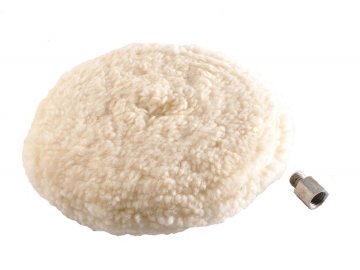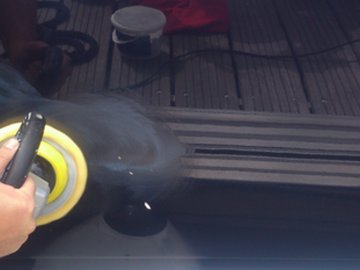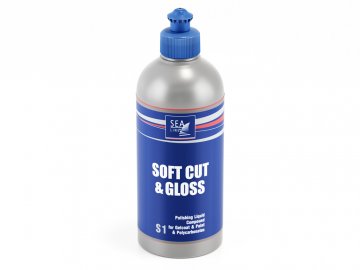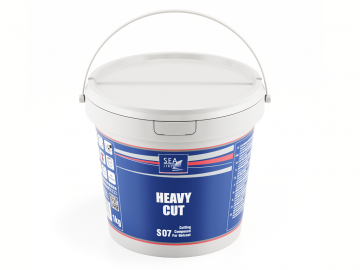Si la surface du gelcoat ou de la peinture de revêtement perd l’éclat, possède les petites rayures survenues par suite de l’exploitation nous pouvons remédier à ces problèmes d’une manière simple et rapide en utilisant les produits de polissage.
| PRODUCT : | SEA-LINE® S0 | SEA-LINE® SO5 | SEA-LINE® S1 | SEA-LINE® S1 PREMIUM | SEA-LINE® S2 | |||||||||||||||||
| CUTTING FORCE | 8 / 10 | 9 / 10 | 6 / 10 | 8 / 10 | 2 / 10 | |||||||||||||||||
| GLOSS LEVEL | 6 / 10 | 8 / 10 | 6 / 8 | 9 / 10 | 10 / 10 | |||||||||||||||||
| PAPER GRADATION | BRIGHT COLOURS AND SURFACES OF LOW OR AVERAGE HARDNESS | |||||||||||||||||||||
| P800⇒ | P800⇒ | P1200⇒ | P800⇒ | P3000⇒ | ||||||||||||||||||
| DARK COLOURS AND SURFACES OF HIGH HARDNESS | ||||||||||||||||||||||
| P1200⇒ | P1200⇒ | P1500⇒ | P1200⇒ | P3000⇒ | ||||||||||||||||||
| MATERIALS DIFFICULT TO POLISH (PLEXI, POLICARBONATES) | ||||||||||||||||||||||
| X | P1500⇒ | P2000⇒ | P1500⇒ | X | ||||||||||||||||||
| UV PROTECTION LEVEL | X | X | VERY LOW | X | AVERAGE | |||||||||||||||||
| MANUAL LABOUR | √ | √ | √ | √ | √ | |||||||||||||||||
| ROTARY MACHINE | √ | √ | √ | √ | √ | |||||||||||||||||
| ORBITAL MACHINE | OPTIONAL ( P2000⇒) | OPTIONAL ( P2000⇒) | X | OPTIONAL ( P2000⇒) | √ | |||||||||||||||||
| TYPE OF SURFACES | ||||||||||||||||||||||
| TOOL GELCOAT | √ | √ | √ | √ | X | |||||||||||||||||
| GELCOAT | √ | √ | √ | √ | √ | |||||||||||||||||
| POLYURETHANE PAINTS | X | OPTIONAL | √ | √ | √ | |||||||||||||||||
| INDUSTRIAL PAINTS | √ | √ | √ | √ | √ | |||||||||||||||||
| OTHER PAINTS | OPTIONAL | √ | √ | √ | √ | |||||||||||||||||
| PLEXI, POLICARBONATES | OPTIONAL | √ | √ | √ | OPTIONAL | |||||||||||||||||
| CHOOSING APPROPRIATE APPLICATOR SEA-LINE® | ||||||||||||||||||||||
| SHEEP WOOL FOR GELCOAT SEA-LINE® | X | |||||||||||||||||||||
| SHEEP WOOL POLISHING BALL (∅80mm) | X | |||||||||||||||||||||
| LAMBSWOOL TYPE D | X | |||||||||||||||||||||
| LAMBSWOOL TYPE mm | ||||||||||||||||||||||
| « BRAYT „PROFI” POLISHING SPONGE | X | |||||||||||||||||||||
| « BRAYT „FINISH” POLISHING SPONGE | ||||||||||||||||||||||
| POLISHING SPONGE | WHITE | X | ||||||||||||||||||||
| PINK | X | |||||||||||||||||||||
| YELLOW | ||||||||||||||||||||||
| BLACK | X | X | ||||||||||||||||||||

LAINE DE POLISSAGE : LAINE DE POLISSAGE SEA-LINE® (DOUBLE FACE) LAINE DE POLISSAGE SEA-LINE® POLISHING CONE SEA-LINE® LAINE D’AGNEAU TYPE „D” (JAUNE) […]

HOLOGRAM REMOVAL – POLISHING INSTRUCTION USE: Removal of holograms and polishing defects caused by polishing Giving the highest surface gloss SURFACE: […]

Sea-Line® S1 Marine est un agent de polissage très efficace qui ne contient pas de silicone. CUT LEVEL = 6 […]

So7 POLISHING COMPOUND – HEAVY CUT Cut level = 10 Gloss level = 6 NO SILICONE PRODUCT DESCRIPTION : S07 […]

Le produit destiné au remplissage des lacunes et à la liquidation des inégalités résultant des dommages ou des inégalités qui […]

La protection de la surface du bateau contre l’influence destructrice de l’osmose et de la corrosion dans des conditions difficiles

La protection contre l’eau et contre l’influence néfaste des rayons UV

La protection du fond du bateau contre l’encrassement par les algues et contre les coquillages. La protection contre l’eau

Une élimination efficace des fissures, le rafraîchissement de la couleur et du brillant du gel coat ou du vernis

Préparations spéciales pour le nettoyage et la remise en vigueur

Laminage, collage et de remplissage des fissures dans gelcoat

Beaucoup de produits utiles pour les travaux de construction d’un bateau